Everything You Need to Know About Metal Three-Way Catalytic Converters for Car Exhaust Systems
When it comes to vehicle performance and environmental compliance, few components are as crucial — or as misunderstood — as the metal three-way catalytic converter. Below, we’ve compiled real-world questions drivers, mechanics, and car enthusiasts often ask about this vital exhaust component. Whether you're concerned about emissions testing, fuel efficiency, or long-term durability, this guide will shed light on the core concerns, advanced technologies, and practical tips around three-way catalysts.
What Is a Metal Three-Way Catalytic Converter, and How Does It Work?
A metal three-way catalytic converter (TWC) is a specialized emission control device that treats the three major pollutants in car exhaust gas: carbon monoxide (CO), hydrocarbons (HC), and nitrogen oxides (NOₓ). It’s called “three-way” because it performs oxidation and reduction reactions to convert these harmful gases into less toxic substances like carbon dioxide, water vapor, and nitrogen.
What distinguishes a metal TWC from its ceramic counterpart is the metallic substrate — often made of stainless steel or FeCrAl (Iron-Chromium-Aluminum alloy) — which offers:
-
Higher thermal conductivity and shock resistance
-
Faster light-off (activation) times
-
Compact packaging for space-constrained designs
The result? Faster emission control right from cold start, which is critical in meeting tight environmental regulations.
Why Should I Choose a Metal-Based Catalytic Converter Over a Ceramic One?
Drivers and fleet managers often face a dilemma: metal vs. ceramic. Here’s why a metal substrate might be the right choice:
| Feature | Metal TWC | Ceramic TWC |
|---|---|---|
| Light-off Time | Faster | Slower |
| Thermal Durability | Excellent | Moderate |
| Mechanical Strength | High (resists vibration) | Fragile under impact |
| Size & Weight | More compact and lighter | Bulkier |
| Cost | Higher upfront | Lower initial cost |
For high-performance applications, turbocharged engines, or regions with strict emissions laws (like California or the EU), metal TWCs provide superior long-term value.
How Do I Know If My Vehicle Needs a New Catalytic Converter?
Common signs include:
-
Check engine light (CEL) with codes like P0420
-
Poor fuel efficiency
-
Rattling noises from under the car
-
Failed emissions test
-
Sulfuric (rotten egg) smell from the exhaust
While not always indicative of failure, these symptoms often point to a compromised or inefficient catalytic converter, especially if the unit is more than 8–10 years old or has experienced fuel contamination.
How Long Does a Metal Catalytic Converter Last?
Modern metal substrate converters are designed to last anywhere between 80,000 to 150,000 miles, depending on:
-
Fuel quality (low-sulfur fuel prolongs life)
-
Vehicle usage (frequent short trips can reduce life)
-
Engine tuning (rich mixtures damage catalysts quickly)
-
Maintenance (timely oil changes help)
High-quality converters from reputable manufacturers meet or exceed OEM durability standards. Some even come with 5-year or 100,000-mile warranties.
What Are the Benefits of an Efficient Catalytic Converter?
An efficient TWC goes beyond emissions — it directly affects:
-
Vehicle Performance – Less backpressure in the exhaust = more engine efficiency
-
Fuel Economy – Cleaner combustion contributes to better mileage
-
Environmental Impact – CO₂ and NOₓ reductions help meet regulatory limits
-
Legal Compliance – Vital for passing annual or biannual emissions tests
-
Resale Value – A well-maintained catalytic system is key for used car inspections
It’s not just about staying green — it’s about protecting the engine and wallet.
Can a Catalytic Converter Be Cleaned or Restored?
This is a hot topic online, but here’s the truth:
Yes, but conditionally. Minor blockages or carbon deposits might be cleared using high-temperature cleaner additives or an “Italian tune-up” (driving at highway speed to raise exhaust temps). However:
-
Oil or coolant contamination = irreversible damage
-
Melted or broken substrate = replacement required
Mechanics can perform a backpressure or temperature differential test to assess whether cleaning is viable.
What Should I Know About Installation Compatibility?
Choosing the right catalytic converter involves three main fitment considerations:
-
Direct-fit vs. universal: Direct-fit models are tailored to specific makes and models. Universal ones require cutting and welding.
-
OBD-II Compliance: Post-1996 vehicles in the U.S. must meet OBD-II certification. Using a non-compliant unit can trigger engine codes.
-
Substrate loading: Measured in grams per cubic inch (g/in³), higher loadings improve conversion efficiency but raise cost.
Always double-check against VIN and regional emission standards.
Are Aftermarket Converters Legal in the U.S. and Europe?
Yes — if they meet applicable standards.
-
U.S. (EPA or CARB): California and some other states (e.g., New York) require converters to be CARB-compliant.
-
Europe (E-marking): Must meet Euro 5/6 regulations and pass homologation testing.
Non-compliant units can lead to fines, void warranties, or even failed vehicle registrations.
What Factors Influence a Converter's Efficiency?
-
Substrate Geometry – Cell density (e.g., 400 CPSI vs. 600 CPSI) affects flow and surface area
-
Washcoat Uniformity – Affects precious metal dispersion and reaction rate
-
Precious Metal Loading – More platinum, palladium, and rhodium improve conversion rates
-
Exhaust Temperature Management – TWCs work best above 400°C
-
Engine Tuning – Air-fuel ratio close to stoichiometric (14.7:1) is crucial
Low-grade units or poor design can significantly underperform, even if they fit physically.
Can a Faulty Converter Damage My Engine?
Indirectly, yes.
-
Backpressure increase = poor throttle response, overheating
-
Sensor feedback disruption = incorrect fuel trimming
-
Exhaust leak = damage to downstream O₂ sensors or even fire hazards
A clogged or inefficient converter strains the entire engine system. Regular inspection minimizes risk.
How Can I Protect My Catalytic Converter From Theft?
Metal catalytic converters often contain valuable precious metals such as:
-
Platinum
-
Palladium
-
Rhodium
These metals make TWCs a common target for theft. You can prevent theft by:
-
Installing protective shields or cages
-
Parking in well-lit or secure areas
-
Engraving your VIN on the converter
-
Using vibration-sensitive car alarms
Some vehicle models (e.g., Toyota Prius, Honda Element) are particularly vulnerable due to the easy access and high-value metal content.
What’s the Future of Catalytic Converters in the EV Era?
While electric vehicles (EVs) don’t need catalytic converters, hybrid vehicles with internal combustion engines still rely heavily on advanced TWC systems. Additionally:
-
Stricter emissions rules globally will push for higher-efficiency catalytic designs
-
Recycling and metal recovery from end-of-life converters is becoming a major industry
-
Innovations like 3D-printed substrates and nanostructured coatings may redefine converter design
Even in a world shifting toward electrification, catalytic converters are far from obsolete.
Final Thoughts: Choosing the Right Catalytic Converter for Your Vehicle
Investing in a high-quality, metal-based three-way catalytic converter ensures long-term performance, regulatory compliance, and peace of mind. Whether you're upgrading for efficiency, replacing a failed unit, or preparing for an emissions inspection, choosing the right component can directly influence your vehicle’s reliability and environmental footprint.
If in doubt, consult a licensed technician or emissions specialist before purchasing.


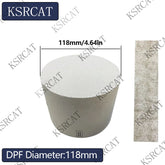
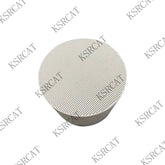
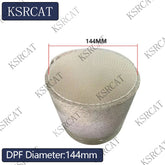
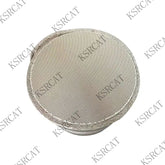






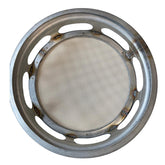
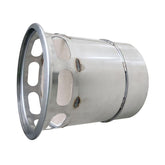

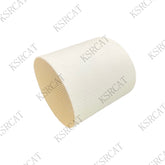
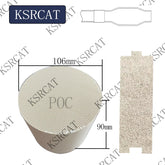
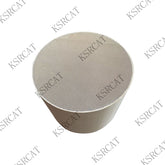
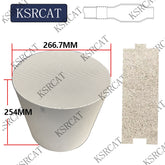
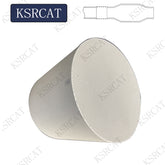


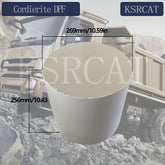

Leave a comment
All blog comments are checked prior to publishing